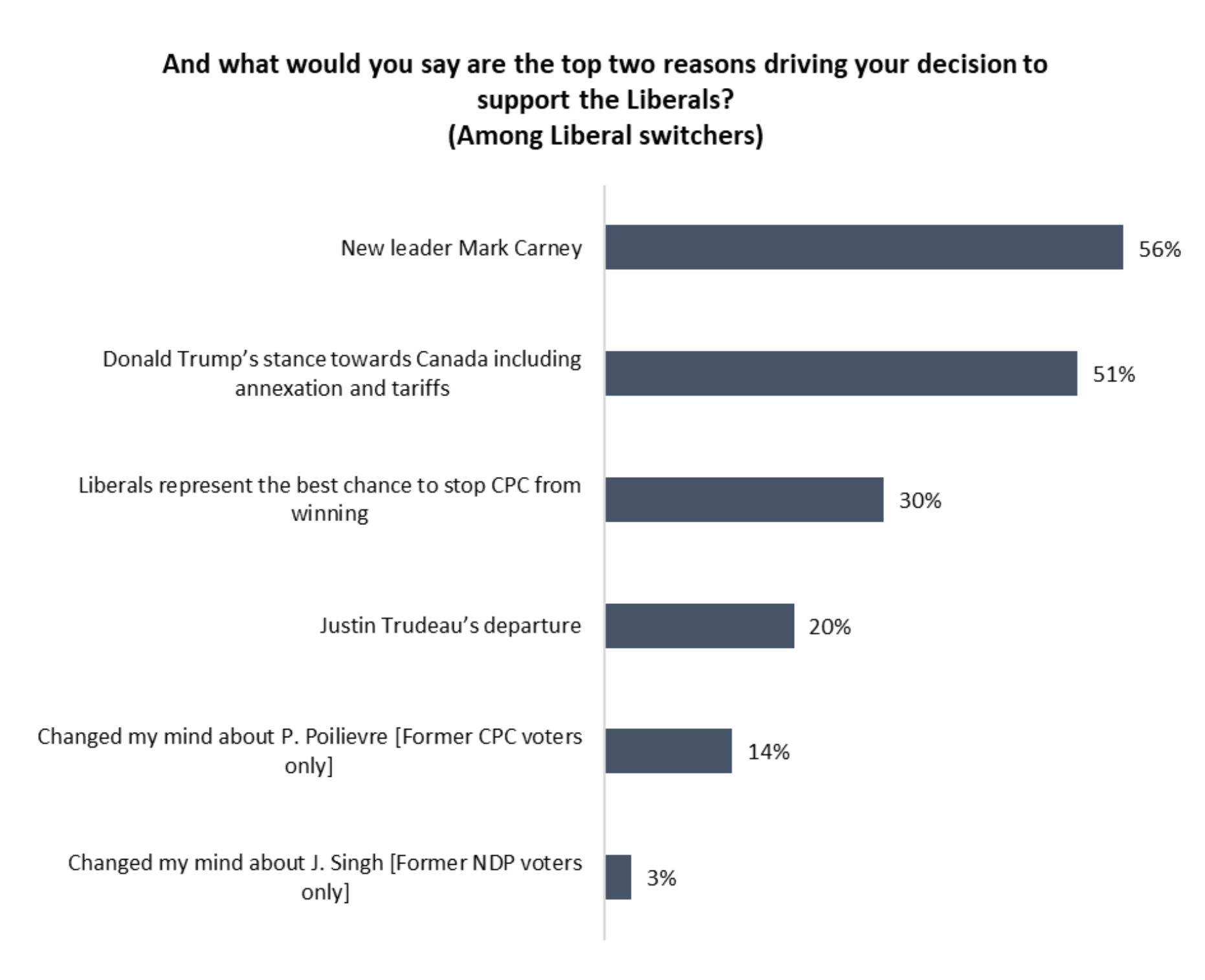ONTARIO – The slings and arrows of outrageous fortune suffered by the NDP and Conservative Party of Canada in recent months have reversed the fortunes of the Liberal Party – at least for now – leaving many to wonder how we got here.
After leading comfortably in the polls for the better part of two years, the Conservative Party of Canada now faces an upward battle to regain even ground against new Prime Minister Mark Carney and his Liberals.
What happened?
New data from the non-profit Angus Reid Institute provide some answers to these questions.
Asked what their main reasons have been, voters who have switched to the Liberals since the beginning of the year, more than half (56 per cent) say they are motivated by the new leader, Carney, about the same number who also say U.S. President Donald Trump’s threats have pushed them to support the incumbents.
Three-in-10 (30%) say they believe the Liberals are the best way to prevent a Conservative government and this is one of the driving factors.
Where did they come from?
Among these “switchers” the largest group say they were formerly supporting the NDP (35%) while slightly fewer have jumped from the CPC (29%).
A significant portion (16%) were undecided, while importantly, 12% were Bloc Québécois voters, and have improved the Liberals chances in Quebec by their decision to swap.
Why?
One of the motivating factors is the elevated concern over U.S. relations and the threat of tariffs.
Among those who have switched to the Liberals and those who supported the party before this year, more than half say that this issue is a top one for them, personally.
This is approximately double the level of concern for that issue among non-Liberal supporters.
Key findings:
– the contending leaders for the position of prime minister are not well-viewed by now-Liberal switchers.
Nine-in-10 view CPC leader Pierre Poilievre unfavourably (90%) while half (52%) say this of NDP leader Jagmeet Singh; and
– only half of those who have switched to the Liberals since the beginning of the year say they are very committed (49%).
Among those who already supported the party coming into the year the level of firm commitment rises to seven-in-10 (71%).



